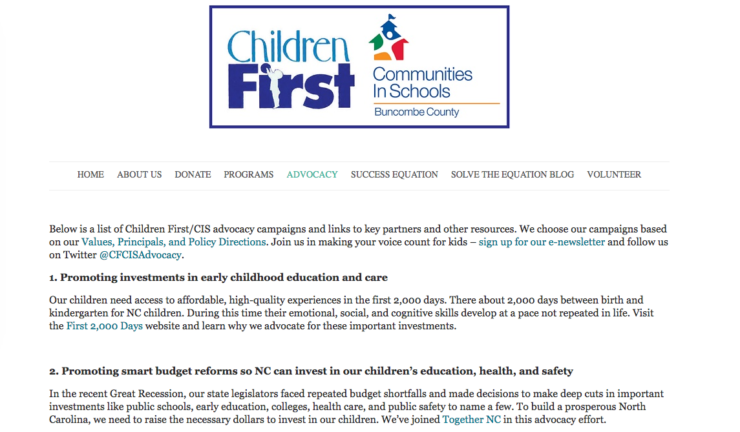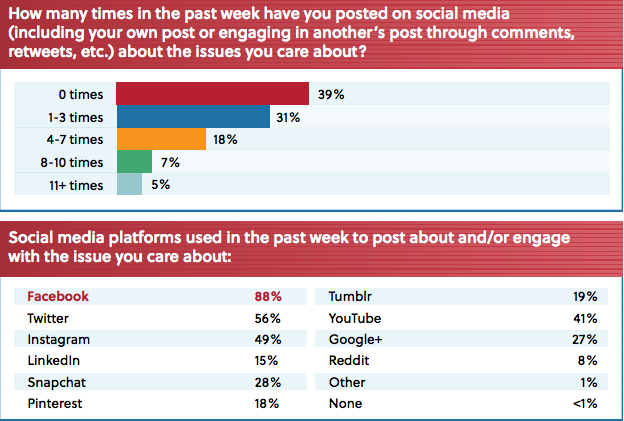Each generation looks at our world through a unique lens. Baby boomers are traditionally known to have strong work ethics and be motivated by prosperity and prestige. Members of generation X are thought to be independent and adaptable. And then, there are millennials, who have been given a bad rep for quite some time.
On the surface, those born between 1980 and 2000 have been characterized as entitled, over-protected, and freedom-loving. But thanks to research on millennials done by Case Foundation and Achieve, we know that millennials are a whole lot more than these superficial (and oftentimes negative) traits.
Because of studies like The Millennial Impact Report, we’re now aware that millennials are a charitable, thoughtful generation who believe that they can leave the world a better place than they’ve found it. In fact, (90%) of millennials think people like them can have an impact in the U.S. to make it a better place to live.
And your nonprofit needs to attract millennial support. After all, they are the future major donors, volunteers, board members, and employees of your organization!
A portion of the 2016 Millennial Impact Report was just released, and it contains a whole lot of great information that your nonprofit can use to target this generation of consumers, employees, and donors. Let’s take a look at some of the most important findings and discuss how they relate to your nonprofit.
1. Most Millennials Donate
The Stat: Slightly over half of millennials (52%) made a donation to a cause affiliated with a social issue in the past month.
It’s easy to overlook millennials as donors because they don’t contribute as much financially as Baby boomers and even generation X do today. However, that doesn’t mean this generation should be dismissed. After all, they are your nonprofit’s future major donors.
Aside from the fact that the majority of millennials are donors, millennials are also more likely to increase their giving year-over-year compared with other age groups.
“Millennials are also more likely to increase their giving year-over-year compared with other age groups…” tweet this
Therefore, it’s important to take steps today to engage and retain these donors for years to come. Nonprofits and charities can do this by focusing on the following:
- Being present on social media
- Organizing events for donors
- Asking donors to participate as individual fundraisers in a peer-to-peer fundraising campaign.
2. Millennials Are Activists
The Stats: 64% of millennials signed a petition about issues they care about in the past month, and 36% said they participated in a demonstration (including rallies, protests, boycotts and marches).

Gone are the days when nonprofits have to stand on the street and ask a passerby to sign a petition. Today, a lot of activism occurs online, which may be one of the reasons why millennials, as a whole, are more likely to advocate for a social cause they feel strongly over donating or volunteering.
Your nonprofit can tap into millennial enthusiasm for activism by creating petitions that advocate for social issues related to your organization. Whether it’s voter registration, early-childhood education, or any number of social or environmental issues, you can excite millennials to support and engage with your cause through activism efforts.
“Your nonprofit can tap into millennial enthusiasm for activism by creating petitions that advocate for social issues…” tweet this
Your nonprofit can engage millennials in activism efforts by trying the following:
- Creating and sharing a petition that impacts your work
- Asking your audience to share photos, videos, and stories that highlight your nonprofit’s services
- Hold legislation-specific rallies
- Encourage millennials to connect with relevant social media groups (Facebook pages, LinkedIn groups, etc.) that support activism efforts.
A great example of a nonprofit promoting their advocacy efforts is from Children First/Communities in Schools of Buncombe County. This nonprofit dedicates an entire website page to their work in advocating for the education, safety, and support of children in their community.

3. Millennials Spend Time Volunteering
The Stat: 46% of millennials volunteered for a cause affiliated with a social issue they care about in the past month.
Though the percentage of millennial volunteers may appear low, consider that this generation values their time as equal to money. If you have millennials volunteers, know that they consider your nonprofit to be of value and worth their time.
Those without the means to donate financially also appreciate the opportunity to give through volunteerism, so be sure that your nonprofit gives millennials the chance to do so.
“Those without the means to donate financially also appreciate the opportunity to give through volunteerism…” tweet this
To get volunteers excited about spending time with your nonprofit, try these techniques:
- Ask volunteers to post about their experience on social media to encourage others to join in on the fun.
- Share the results of each opportunity with volunteers and on social media (how many pounds of food were collected, the number of hours volunteered, etc.)
- Choose times that work best for the majority of your audience, such as after work or early Saturday morning. For the best results, survey past volunteers to figure out the times that work best for the majority.
4. Millennials Use Social Media To Talk About Causes
The Stat: 61% of respondents indicated they had posted on social media at least once in the past week, and most of these respondents posted 1-3 times (31%). Likewise, Facebook was most popular social media platform respondents used to post about or engage with social issues online (88%), followed by Twitter (56%), Instagram (49%), and YouTube (41%).

Millennials not only use social media to connect people to people, but to connect people to ideas, causes, and brands. As you can see from the charts above, millennials use some platforms (Facebook, YouTube, Twitter, and Instagram) more than others, so keep this in mind when determining which ones to use.
“Millennials not only use social media to connect people to people, but to connect people to ideas, causes, and brands…” tweet this
And it isn’t just about where you post that’s important, it’s what you post. As a nonprofit, you’ll need to keep your social media content engaging, relevant, and most importantly, shareable.
Create shareable content that appeals to millennials by trying the following:
- Ending posts with a call-to-action
- Including compelling stories that evoke emotion
- Ensuring posts contain something that adds practical value
If anything, the latest Millennial Impact Report continues to show us that this generation is becoming an increasingly important part of the nonprofit fabric. They make up a substantial portion of donor, volunteers, activists, and social media followers. Because they’re tremendously loyal, now’s the time to adapt to their likes and start garnering their support!




